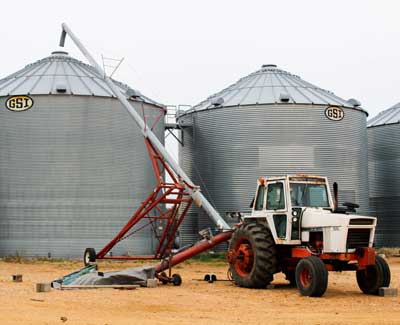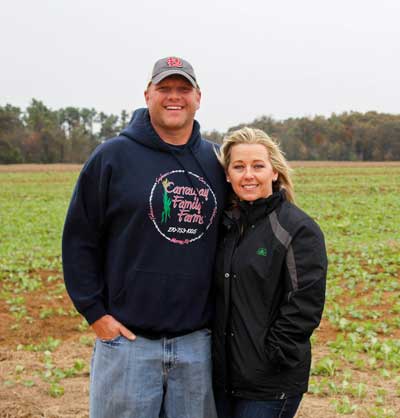Story by McKenna Dosier, Contributing writer

The heavy rain at the beginning of the summer and dry conditions at the end of the summer threw Kentucky farmers a curveball this season.
Heavy rains at the beginning of the summer and the lack of rain toward the end of the summer threw Kentucky farmers and their crops a curveball this season.
The second round of soybeans, planted after wheat, were affected by dry conditions, but were still not the worst crops area farmers say they have seen.
Joanna Carraway, Murray State alumna and part owner of Carraway Family Farms, said it was really wet until the second week of July. It was so wet farmers had trouble getting their second round of soybeans in the ground, which led to replanting several acres. They were also worried about their tobacco, which is not a wet natured crop.
Carraway Family Farms in Murray covers about 2,300 acres. About 65 percent of that land is dedicated to growing soybeans, 30 percent corn, five percent milo and 116 acres of tobacco. The Carraways employ 19 seasonal migrant workers, but most of the row crop planting and harvesting is done by the family.
Craig Carraway’s grandparents purchased Carraway Family Farms in 1955 and in 2006, Joanna and Craig, both Murray State alumni, became partners in the business with them. Joanna has a degree in agronomy and Craig’s degree is in agribusiness. Both families have been farming as far back as they can trace.
Although the double-crop beans took a hit with the dry weather late in the season, the Carraways said they’re still not the worst beans they’ve ever had. The harvest has turned out well compared to really dry years the state has experienced, like 2012, Craig Carraway said.
Farmers can’t predict the weather, so they plant several varieties of seeds, hoping something will take, start to flower and put on pods when the rainy season comes around.

Despite dry conditions the Carraways still expect to make a profit from the fall harvest.
There is a 20-bushel difference between the beans planted in early May and the beans planted after the wheat. The beans planted in early May yielded more than the later crop.
Joanna Carraway said when you put pencil to paper and start to look at the numbers, there are still huge amounts of money to be made all across the board.
The current market price for soybeans is nine dollars per bushel. The United States Department of Agriculture projected an average of 46 bushels per acre of soybeans this year. If you farm roughly 1,000 acres, she said there are still “huge, huge amounts of money to be made” after you do the math.
“This year, the early beans did really, really well,” she said. “Probably the best beans we’ve ever had.”
“May ever have again,” added Craig Carraway.
The late beans are fair, not a failure by any stretch of the imagination, they said. There is still enough room and the double-crop beans are still doing well enough for a profit to be made.
The Carraways attended a seminar several years ago when they first started farming and heard a retired professor speak about agriculture and the weather.
He said, “You basically need to prepare because out of a 10 year time span, you’re going to have two years where the stars line up. The prices are decent, the crop is good, you’ve had good weather, everything is going to be great. Maybe two years out of 10, so you’ve got to prepare for the other eight years.”
When crops are profitable, they make up for previous years in which farms lost money or barely broke even. Some farmers are still recovering from the dry weather of 2012 and 2014.
“If someone makes $100,000 then they might have lost $150,000 last year. You gotta average it out of a 10 year time span. So when people are like, ‘Man, farmers must be getting rich, prices are so high,’ that’s really not the case. We’re trying to average out,” Joanna Carraway said.
Along with a good yield from the early beans, the farm expects the tobacco crop to turn out well, said the Carraways.
Interesting read, very good explanation of the decision of whether or not planting wheat is profitable!